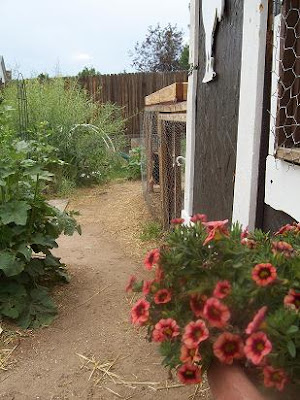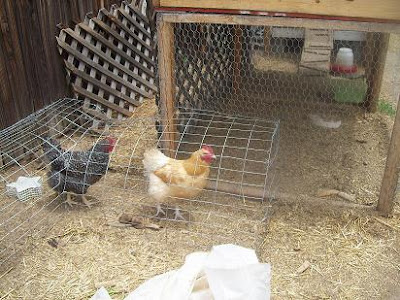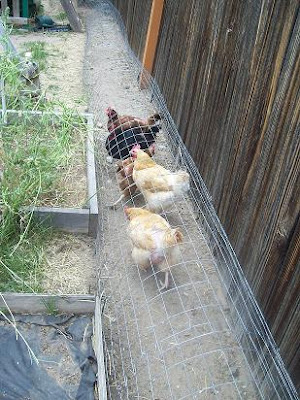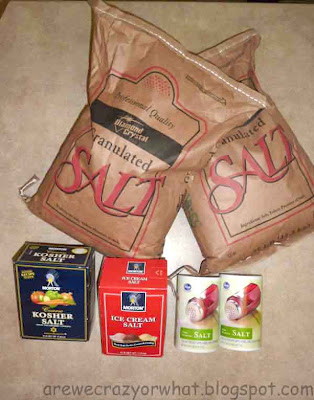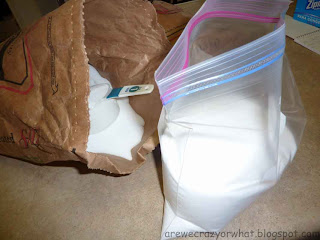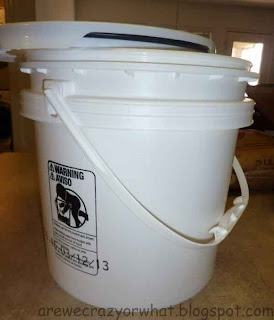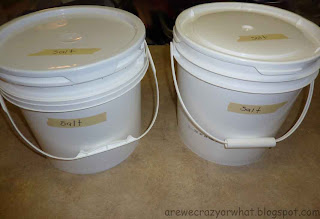How to upcycle your broken mobile phone parts into survival tools.
Author Archives: staff-writer
Homemade Emergency Canned Heat
We lost power at 4:23 am on Saturday morning. We had power restored at 11 am on Monday. It was a long few days. We were able to stay in our house. Thankfully no pipes broke and there were no major events other than the power outage.

I want to really encourage you all to be prepared for such emergencies. We have moved twice in the last year and had let our supplies dwindle. We had no propane for the camp stove. We had no firewood. Not a good situation to be in. We did have some knowledge though and that helped us to get through until we were able to get wood and propane.
You can make your own “Sterno” at home for heating water. It is an open flame. By that I mean OPEN FLAME! Especially when initially lit. The flame starts out tall and then gets shorter. I found this to be true each time it was lit (not just the very first time).
Never to be put where it can tip over, get knocked over, be around children (we have 5 of those), etc. I decided to clear one side of my sink and put the can in the sink to hopefully minimize any accidents. The flame is burning off alcohol so it can not be put out with water. I wanted to be clear that I put it in the sink not so I could douse it with water, but in case it tipped over I would at least not have flame rolling across my floor. I was also careful to clear the area around the sink of anything flammable. This homemade cooking/heating gave us some hot water and our first hot meal (Spaghetti-o’s) in 24 hours. Having a way to heat food & drinks really boosted our moral.
Supplies:
- Large metal can & its lid
- Roll of toilet paper
- Isopropyl alcohol (rubbing alcohol)
How To Make:
Clean The Can: You need a large clean metal can and it’s lid. In our case, I emptied a can of crushed tomatoes into a bowl, cleaned the can and lid (be careful of sharp edges) and dried them. Do NOT throw away the lid!
The Toilet Paper: Remove the cardboard tube from the toilet paper roll. Fold the TP roll in half length wise and then in half again (you’re crushing the roll and making it as compact as possible). Insert the roll of toilet paper into the can. Wrap additional toilet paper around your hand (making a mini-roll of TP) and compact in the same way you did the large roll – use this to fill in any spaces. Repeat until you have the can tightly packed with toilet paper.
Adding Alcohol: Slowly pour the isopropyl alcohol over over the TP in the can until the TP is saturated. This took nearly 2 bottles in my case.
Use:
Hold a match to the alcohol. It should light right up. This will burn nicely for quite some time. To put the flame out simply lay the lid on top of the flame. I am told that snuffing (eliminating any source of oxygen) is the only way to put this flame out. That is why you need the lid. I used tongs to put the lid on because I had them available. Make sure the flame is out and keep it out of the reach of children.
After several uses you see a bit of charring on the TP & some blue candle wax from lighting it (we were conserving matches).
You will need to hold the pot above the flame (resting the pot on the flame will put it out). I used an oven rack across my sink.
**Please know that I am sharing this in the hope that it may come in handy one day to you or your family. YOU are 100% responsible for your safety should you choose to try this. I can make no guarantees on how well or how safe it is. As with any open flame; you must make sure there is proper ventilation. Keep yourselves safe! I used the canned heat several times before we were able to obtain propane for our camp stove and I had no problems using it. I made sure my children were no where near me when dealing with the can in any way.
Plant Now: Winter Sowing
Sowing The Seeds Of Love
[Source]
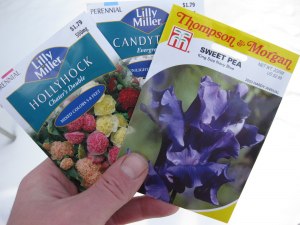
BELIEVE IT OR NOT, I start my summer garden in January, using a neat trick called “Winter-Sowing.” Winter-sowing is an outdoor method of seed germination (invented by Trudi Davidoff) which requires just two things: miniature greenhouses (made from recycled milk jugs) and Mother Nature. You can winter-sow your way to a beautiful garden, too…for pennies. Here’s how:
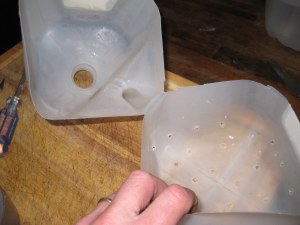
Make a Greenhouse. You can make a greenhouse from any container you like, so long as light can penetrate its walls. Like other winter-sowers, I use recyclables, including gallon-size milk- or water- jugs, and 2-Litre soda-pop bottles. With jugs and bottles, use a pen-knife to cut around the middle, almost all the way through. The uncut half-inch or so will serve as a hinge.
Next, punch out drainage holes in the bottom. A Phillips screwdriver, heated over a flame at the stove, will facilitate the hole-punching job. Punch out also a few holes along the top portion of the container. These extra holes increase air-ventilation. Ventilation, of course, is the key to preventing excess heat from building up in the greenhouse, and baking the seeds to death. If there is a cap on your jug or bottle, remove it.
Select the Right Soil. It is essential to use a soil mix that drains well, and has a light, fluffy consistency. Pour the soil, preferably to a depth of 3 to 4 inches, into the bottom half of your container. Then moisten the soil thoroughly and let it drain.
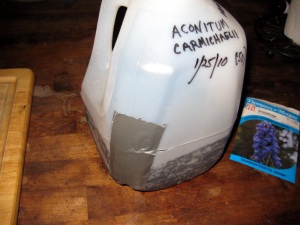
Sow the Seeds . Sow your seeds on the soil surface, and then cover them with more soil, when necessary, to achieve the proper planting depth. Gently pat the mix down, so that seeds and soil make good contact. Then replace the lid, and secure it with a strip of duct tape, as illustrated.
If you live in a cold climate, as I do, plant your perennial and hardy annual seeds first. Should these sprout during a weird warm-spell in winter, they will not be harmed. Wait until March to plant your tender annuals. More details here: What Seeds Are Best For Prepping.
Remember to Label! For each sowing, indicate with a permanent marker (or a paint-pen) the seed variety and date sown. Do not omit this step, for there is nothing worse than finding, in spring, dozens of miniature greenhouses brimming with seedlings, and not knowing what they are!

Bring the Greenhouse Outdoors. Your greenhouse, once planted and labeled, is ready to brave the outdoor elements. Select a location that is safe from strong wind, but where sun, rain and snow will be freely admitted. My assorted greenhouses go on the patio table, out of the reach of Lily the Beagle who would otherwise knock them over. For further protection from tipping, I place them in a large plastic box, with drainage holes melted in the bottom.

Relax. Now sit back and let Mother Nature do her thing. As the weather chills and warms, your seeds will freeze and thaw. These natural actions loosen the seed-coatings. This is why advance soaking or nicking of hard-shelled seeds, such as Morning Glories and Sweet Peas, is not necessary when you winter-sow.

At the first kiss of spring, but while nights are still freezing, seedlings will begin to emerge. Now is the time to check for water. Open the tops, and if the soil appears dry, moisten thoroughly but gently, so as not to disturb tender root systems. Then close the tops again. On warm, sunny days, I open the tops for hours at a time, and let the seedlings enjoy the fresh spring air. The tops, of course, are closed at dusk.

I can’t tell you how advantageous winter-sowing can be. Last year I produced an entire garden’s-worth of perennials this way (far too many, in fact), without the need for light-systems, heating devices, or fancy seed-starting kits. And, unlike windowsill-germinated seedlings, which more often than not are frail and spindly, winter-sown seeds grow up to be strong, sturdy plants, completely prepared for glorious careers in the open garden.
If I were you, I’d give winter-sowing a try. Honestly, it’s the easiest, most cost-effective way to achieve a beautiful garden.
[Source]
THE CHUNNEL: THE CHICKEN TUNNEL
[source]
Here’s a visual tour.
This is at the back of my suburban homestead. I am standing right next to the coop.
To the left of the coop is the run. For a year this was all the space the chickens had and I knew they needed more room. On top of the run is a new addition…it is my lettuce box. It provides shade for the chickens and protects them from the rain so they can still be outside. I can grow on top of the run without losing any space. Space is a premium here in the suburbs. I had to figure out how to give the chickens more room without taking anymore garden space. If we extended this run to the left, it would sit right on top of one of my prime growing areas. So here is our solution: a chunnel. That’s right…a chicken tunnel.
Directly to the left of the run is the juncture where the chunnel connects to the run.
Then we travel more to the left…you see the chunnel behind my pea trellis and some chickens looking for some treats.
Then the chunnel turns the corner and heads down the western side of my yard along the fence. I had such weeds that grew here…and now you can see not a single thing is left growing!!!
And here is the scene that causes me the most amount of joy!!!! Every time this happens I giggle like a school girl. All I have to do is call the girls and they come a runnin’!!!! I am at the very end of the chunnel. They run like there is no tomorrow and it is so fun to watch! (note: do you see there is no longer one green thing along the side of the fence!)
This side of the yard gives them lovely shade in the heat of the afternoon. I have to say, living in the suburbs I have to protect them from lots of critters…we have foxes and birds of prey everywhere. This is as close to free range as we can get for them and they don’t need supervision. The chunnel is very secure and they are indeed much happier!!!
This is the very end of the chunnel and it has been fun showing you our solution of adding more room without taking much space! Hope you have enjoyed this post.
Index Of Knots
Emergency Food Items That Can Last a Lifetime

Did you know that with proper storage techniques, you can have a lifetime supply of certain foods? Certain foods can stand the test of time, and continue being a lifeline to the families that stored it. Knowing which foods last indefinitely and how to store them are you keys to success.
The best way to store food for the long term is by using a multi-barrier system. This system protects the food from natural elements such as moisture and sunlight, as well as from insect infestations.
Typically, those who store bulk foods look for inexpensive items that have multi-purposes and will last long term. Listed below are 11 food items that are not only multi-purpose preps, but they can last a lifetime!
Honey
Honey never really goes bad. In a tomb in Egypt 3,000 years ago, honey was found and was still edible. If there are temperature fluctuations and sunlight, then the consistency and color can change. Many honey harvesters say that when honey crystallizes, then it can be re-heated and used just like fresh honey. Because of honey’s low water content, microorganisms do not like the environment.
Uses: curing, baking, medicinal, wine (mead)

Salt
Although salt is prone to absorbing moisture, it’s shelf life is indefinite. This indispensable mineral will be a valuable commodity in a long term disaster and will be a essential bartering item.
Uses: curing, preservative, cooking, cleaning, medicinal, tanning hides
Sugar
Life would be so boring without sugar. Much like salt, sugar is also prone to absorbing moisture, but this problem can be eradicated by adding some rice granules into the storage container.
Uses: sweetener for beverages, breads, cakes, preservative, curing, gardening, insecticide (equal parts of sugar and baking powder will kill cockroaches).
Wheat
Wheat is a major part of the diet for over 1/3 of the world. This popular staple supplies 20% of daily calories to a majority of the world population. Besides being a high carbohydrate food, wheat contains valuable protein, minerals, and vitamins. Wheat protein, when balanced by other foods that supply certain amino acids such as lysine, is an efficient source of protein.
Uses: baking, making alcohol, livestock feed, leavening agent
Dried corn
Essentially, dried corn can be substituted for any recipe that calls for fresh corn. Our ancestors began drying corn because of it’s short lived season. To extend the shelf life of corn, it has to be preserved by drying it out so it can be used later in the year.
Uses: soups, cornmeal, livestock feed, hominy and grits, heating source (do a search for corn burning fireplaces).
Baking soda
This multi-purpose prep is a must have for long term storage.
Uses: teeth cleaner, household cleaner, dish cleaner, laundry detergent booster, leavening agent for baked goods, tarnish remover
Instant coffee, tea, and cocoa
Adding these to your long term storage will not only add a variety to just drinking water, but will also lift morale. Instant coffee is high vacuum freeze dried. So, as long as it is not introduced to moisture, then it will last. Storage life for all teas and cocoas can be extended by using desiccant packets or oxygen absorbing packets, and by repackaging the items with a vacuum sealing.
Uses: beverages, flavor additions to baked goods
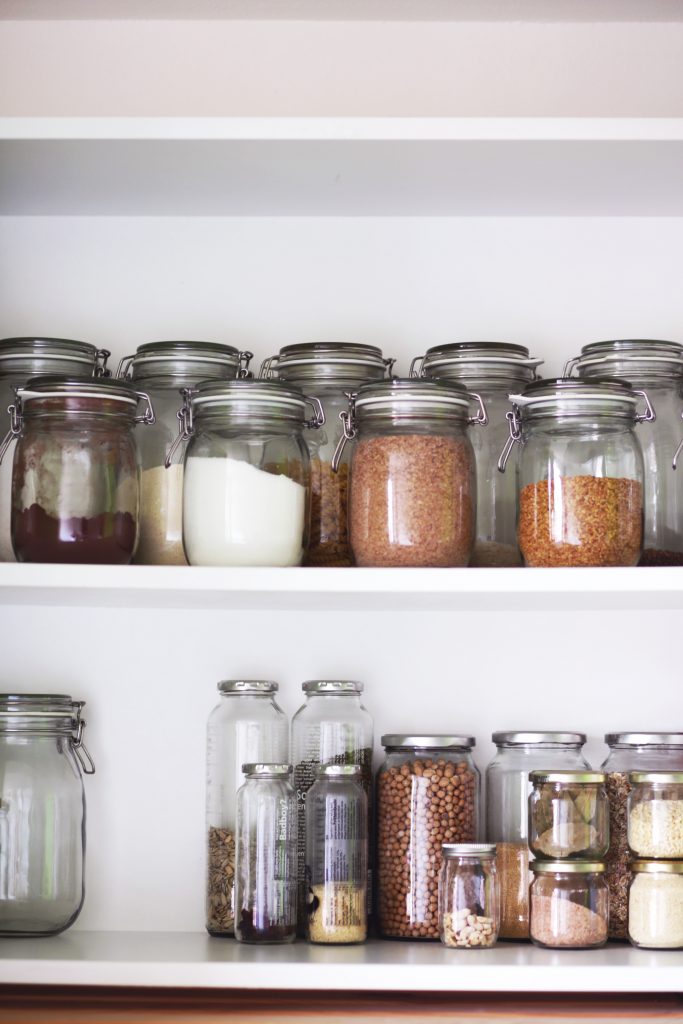
Non-carbonated soft drinks
Although many of us prefer carbonated beverages, over time the sugars break down and the drink flavor is altered. Non-carbonated beverages stand a longer test of time. And, as long as the bottles are stored in optimum conditions, they will last. Non-carbonated beverages include: vitamin water, Gatorade, juices, bottled water.
Uses: beverages, flavor additions to baked goods
White rice
White rice is a major staple item that preppers like to put away because it’s a great source for calories, cheap and has a long shelf life. If properly stored this popular food staple can last 30 years or more.
Uses: breakfast meal, addition to soups, side dishes, alternative to wheat flour
Bouillon products
Because bouillon products contain large amounts of salt, the product is preserved. However, over time, the taste of the bouillon could be altered. If storing bouillon cubes, it would be best repackage them using a food sealer or sealed in mylar bags.
Uses: flavoring dishes
Powdered milk – in nitrogen packed cans
Powdered milk can last indefinitely, however, it is advised to prolong it’s shelf life by either repackaging it for longer term storage, or placing it in the freezer. If the powdered milk developes an odor or has turned a yellowish tint, it’s time to discard.
Uses: beverage, dessert, ingredient for certain breads, addition to soup and baked goods.
source:
Author: Tess Pennington
Web Site: http://www.ReadyNutrition.com/
Salt: A Valuable And Needed Item In Your Preps
How and Why to Store Salt
Different kinds of salt and their uses:
Table Salt: Table salt is the refined white crystal typically found in a salt shaker. It usually comes in a cardboard can and is the cheapest salt on the shelf at the grocery store. You can buy it with or without iodine added (more on that later). It generally contains an anti-clumping agent.
Sea Salt and/or Mineral Salt: (such as Himalayan Pink Crystal Salt or Celtic Sea Salt): All salt originally came from the sea so to call something sea salt is a bit misleading. Typically when something is labeled sea salt it is not refined and still has other minerals in it, whether it was mined or was processed out of sea water. The minerals salt contains vary according to where the salt was mined. Himalayan salt contains different minerals than Celtic sea salt. Sea salt that has been collected after water has evaporated or distilled also has other minerals from the ocean. There are a lot of “gourmet” salts on the market so it’s important
to read the label.
Koshering and Pickling Salt: Koshering salt (commonly known as kosher salt) generally consists of salt without additives I say generally because there are some brands that do contain additives, so always read the label. Kosher salt has a large flat grain helpful for the koshering process, and if it does not have any additives it can be used for canning. Pickling salt is refined salt with no anti-clumping agent and is used for canning – it has a very fine grain so it will dissolve quickly in liquids. Using table salt for canning discolors the food because of the additives.
Rock Salt and other salts: Rock salt (the kind found at the grocery store) is salt typically used in ice cream makers and is not approved for human consumption; again, it’s important to read the label. There are other types of salts available such as salt used in water softeners or salt used to help melt ice on roads. These are not meant for human consumption and should not be placed in food storage.
Why Salt is Important:
Salt is an important part of a healthy diet. Salt helps to balance electrolytes and is needed for proper cell function.Without salt we will die.
Which Type of Salt to Store:
If you are eating from your food storage you may not be eating a lot of processed foods and the salt that you have stored could be your main salt intake. So it’s important to decide what kind of salt is best to store for your family. Iodine was added to salt to prevent Goitre. You can get iodine from other sources of food such as seafood, soil (if it is contained in the soil you grow your food in) or seaweed such as kelp or dulse. Also, most multi-vitamins contain iodine. The only down-side to storing salt with iodine is that it can turn yellow after time. If you’re storing salt as a trading item (see below), yellow salt might not look so appetizing. However, it’s still safe to eat and will store indefinitely. If you store table salt without iodine it will usually just contain an anti-clumping agent and will store indefinitely. Sea salt and mineral salt will also store well but not indefinitely. They would deteriorate according to the other minerals they contain. So reading the labels and doing an internet search on the minerals contained in the salt would give you an idea of the shelf life.
Table salt is cheapest of all the varieties of salt therefore it is easy to obtain a year’s supply for your family, which should be between 3-5 pounds a person, in a relatively short time. If you’re on a budget, like me, table salt might be your best option. You may also want to stock-up on pickling salt if you plan to preserve things from your garden. You would have to calculate how much according to the estimated yield from your garden for a given year. Pickling salt and table salt will store indefinitely, even if moisture seeps into the container, it can be laid out and dried.
Salt Storage:
Here’s what I did:
I bought two 25 pound bags of salt from a big box store. The bags do not contain iodine and this was my only choice from this store. I have a food saver but decided that I did not want to waste my storage bags because salt will not go rancid even if it’s exposed to air.
I scooped the salt into one gallon bags. I did not fill the bags all the way because I did not want the plastic to break. They will probably be retrieved by one of my children in our food rotation process so I wanted to make sure they were light enough to carry. I poured the salt into a pitcher because it’s very hard to pour a bag into a bag.
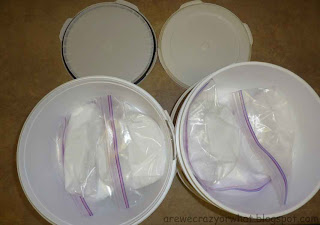 |
Other Important Notes:
- Salt should not be confused with Epsom salt (also known as magnesium sulfate) – they are completely different compounds.
- Never store salt in metal containers. Salt leaches metals and/or elements out of the metal. You could wind up with a poisonous substance in your salt.
- Also something to consider is using/storing salt to be used as a bartering item. A lot of preppers store canned goods and processed food, which already contain salt, so they don’t give much thought to plain salt. In our culture today salt has been associated with heart attacks and other health afflictions resulting from the over consumption, therefore, many people might not store enough salt or store it at all. At some point, processed food might become scarce and salt would once again be a valuable item as it was in ancient times.
10 Unbelievable Ordinary Things That Could Be Potential Lifesavers

10. Sanitary Pads | Bleeding Wounds Treating
The sanitary pad’s origin lies in nineteenth-century battlefield hospitals to treat bullet wounds. Only after World War I did they take on their now-traditional use of female hygiene. In case of emergency, when medical attention may not be available, bleeding wounds treating will be a necessity. The pads could be quit handy to cover the wounds.
9. Compact Mirror & Whistle | Fire And Rescue
It is a lifesaver when used as a silent emergency beacon. It can be effective in both sun and moonlight, and can even start fires on a sunny day. Although a rescue team passing by still may miss your signal; an auditory signal from a whistle is certain to attract their attention.
8. Super Glue | Emergency Wounds Suture
Have a superficial wound that needs stitching? No medical staff, no needle and thread or no sewing training? No problem. While it will not do much for penetrating wounds like gunshots, super glue as an emergency suture can quickly bind and protect minor lacerations that otherwise could become infected.
7. Gunpowder | Sterilizing And Cauterizing Wounds
You’ve seen it in the movies: guy gets shot, breaks apart a few bullets, pours the gunpowder over the wound and lights it. Guess what? While excruciatingly painful, it does exactly what is needed by sterilizing and cauterizing the wound.
6. Charcoal & Cheesecloth | Water Purification
Charcoal is amazing for some other uses than cooking: water purification. Drill a hole in the bottom of any type of plastic container, line it with the cheesecloth, place charcoal in it and pour in water – and voila, an instant water purification system! Afterwards, you can let the charcoal dry and cook your dinner with it.
5. Chewing Gum | Suppress Appetite
The simple act of chewing a gum can suppress your appetite, thereby preserving limited food supplies for longer periods, while aiding in necessary saliva production.
4. Vinegar | Antibacterial And Microbial
Vinegar is a great antibacterial and microbial that can treat skin burns, inflammations and infections. As a cleaning agent it sanitizes and deodorizes, and can mask any odors which you’re afraid might give away your position to wildlife. A small amount mixed with water can also be swallowed to relieve an upset stomach, or to remove parasites from any contaminated water or undercooked venison you may accidentally consume.
3. Condoms | Water Storage
Condoms are useful in another way than sex: water storage. Durable and stretchable, a condom can hold up to a gallon of water. They can also be used to protect against water, as a stretchable cover for valuable items like matches and walkie-talkies.
2. Harmonica | Maintaining Focus And Concentration
Musical tones – regardless of the source – have been shown to stimulate both the creative and pleasure centers of the brain; to help maintain focus and concentration; and to reduce anxiety and pain. The harmonica just might help maintain your sanity until the situation normalizes.
1. Baking Soda | Reliever of Upset Stomachs
Most effective as a reliever of upset stomachs, there is an even better reason to have baking soda handy: fire. In an emergency, an inexpensive alternative for water, baking soda easily puts out cooking and other small fires that may occur while hunkered in your bunker.



